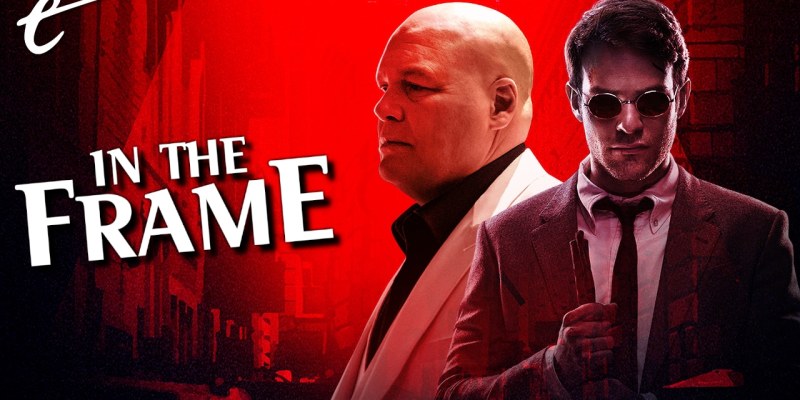With the release of Spider-Man: No Way Home and the end of Hawkeye, Marvel Studios has begun the process of folding the Marvel Netflix shows into the Marvel Cinematic Universe (MCU). To be fair, the shows always had a somewhat loose connection to the established MCU continuity, but the appearance of Matt Murdock (Charlie Cox) in No Way Home and of Wilson Fisk / Kingpin (Vincent D’Onofrio) in Hawkeye officially folds Daredevil into the shared universe.
There are already suggestions that Kevin Feige might want to bring other Netflix heroes like Luke Cage (Mike Colter) and Jessica Jones (Krysten Ritter) into the fold. Disney’s acquisition of 20th Century Fox brought the X-Men and Fantastic Four franchises under the control of Marvel Studios, which has been a long-term goal for the company. There are rumors that characters from Fox properties like Mister Fantastic and Magneto might appear in Doctor Strange and the Multiverse of Madness.
Folding these characters into the shared continuity that Marvel Studios has built poses several interesting challenges. Perhaps the most obvious tension is one of tone. The Marvel Netflix shows had their own distinct tone and milieu. They tended to be a bit darker and more violent than the films in the MCU. This raises questions about how best to incorporate these incarnations of the characters without losing what made them so distinct in the first place. Befitting the arrival of Mister Fantastic, the MCU might need to be a little more elastic.
This is perhaps most obvious with the character of Wilson Fisk / Kingpin, as played by Vincent D’Onofrio. In the first season of Daredevil, the character’s defining moment is smashing an associate’s (Gideon Emery) skull in a car door in the fourth episode. The character maintains that level of violence throughout the show. It’s very much in keeping with the character’s comic book persona, where he has been implicated in horrific crimes like child prostitution and drug dealing.

As such, Kingpin is utterly unlike any villain in the MCU. This tension is obvious during his appearance in the final episode of Hawkeye. The show reveals his involvement in the penultimate episode, with Clint Barton (Jeremy Renner) admitting that he has spent the show trying to avoid the attention of “the big guy.” However, Wilson Fisk has absolutely no menace in Hawkeye. He takes meetings in a back room and throws Kate Bishop (Hailee Steinfeld) around a toy store. The imagery is fitting.
The Wilson Fisk Kingpin who appears in the last episode of Hawkeye is no more threatening than throwaway MCU villains like Justin Hammer (Sam Rockwell) from Iron Man 2 or Sonny Burch (Walton Goggins) from Ant Man and the Wasp. The episode features a returning actor from Daredevil, dresses him in reference to the graphic novel Family Business, and ends in an allusion to the end of a storyline from the Daredevil comics, but there’s none of the menace or threat that made the character work.
The appearance of Wilson Fisk in Hawkeye is a test case for a challenge that Marvel Studios faces going forward, particularly as it swallows properties previously controlled by other studios. Netflix and Fox offered some diversity in terms of the tone of superhero stories that could be told, while the MCU has been built upon a level of internal consistency and homogeneity that has become part of the brand identity. It is one way to tell superhero stories, and a good one, but it is not the only way.
Some characters bristle against this one-size-fits-all approach. Asked about reprising his lead role in The Punisher, Jon Bernthal suggested that forcing the character into a family-friendly mode would be a betrayal. “It needs to be a level of darkness,” he argued. “I think if there’s any let up on that character, you do a disservice to the character, to every iteration of the character, to every comic book that’s come before, and to all of the unbelievable fans of the character.” Indeed, it’s arguable that Netflix’s approach to the character sanded down too many rough edges.

Producer Kevin Feige has admitted that the company is aware of the problem as it relates to Deadpool (Ryan Reynolds), an immensely popular comic book character who appeared in two massively successful R-rated movies. However, there is some indication that Feige sees Deadpool as an exceptional case. Certainly, the portrayal of Wilson Fisk in Hawkeye suggests that Marvel Studios expects most of its canon immigrants to adhere to the company’s gentle PG-13 aesthetic.
“Other than Deadpool, which has already established itself as a certain genre and a certain rating that we’ve already said we would not mess with when we start working with Deadpool … we’ve not ever encountered a story or a storyline or a character’s journey that a PG-13 or the tone or the ratings that we’ve been using up to this point has prevented us,” Feige has argued. That said, it seems unlikely that Marvel Studios would ever have green-lit an R-rated Deadpool movie in the first place.
To be clear, this isn’t entirely about age ratings, although they are a part of it. There is a long history of moral panics and pearl-clutching around superheroes, which runs from the Golden Age of Comics through to the release of Batman Returns. The Marvel Comics from which the MCU draws were among the first to push against restrictive censorship when the story demanded it, with a 1971 story in Amazing Spider-Man dropping the Comics Code Authority seal of approval to tackle drug abuse.
There are plenty of stories that justify a higher age rating, particularly considering the strange double standards that exist around the R rating. There are plenty of classic R-rated blockbusters, from Terminator 2: Judgment Day to Gladiator to The Matrix to Mad Max: Fury Road to The Rock to RoboCop. If superhero movies are to be the dominant blockbuster form of the 21st century, constantly compared to westerns, then surely they should support the same diversity of tone?

More to the point, most of the recent handful of R-rated superhero properties justify their rating. Logan is one of the best superhero films ever made. Birds of Prey uses its R rating to say something unique and distinct. Even The Suicide Squad pushes itself into moments of genuine horror and pathos that wouldn’t be possible with a lower age rating. It’s hard to imagine the value of a version of Jessica Jones that isn’t free to deal with themes like sexual assault and addiction. Not every (or even most) superhero movies should push themselves in that way, but it is good that those that want to enjoy the freedom to do so.
Indeed, there are already reports of tensions within Marvel Studios and Disney over this issue. There are reports of Feige pushing for the freedom to allow some Marvel Studios productions to have a higher rating. This corresponds with reports of ongoing debates within Disney about whether the company wants to develop non-family-friendly content for its Disney+ streaming service to better compete with Netflix. Overseas, Star is packaged with Disney+ as a way of navigating this tension.
However, it should also be noted that there is a lot of freedom within the PG-13 rating. After all, there are plenty of classic PG-13 movies that have an appreciably harder edge than anything in the MCU, from Ghostbusters to Beetlejuice to Taken. It should be possible to make a character like Wilson Fisk genuinely scary without any violence more graphic than that featured in The Dark Knight, whether the infamous pencil trick or the Glasgow smile.

Feige has acknowledged this during pre-publicity for Doctor Strange in the Multiverse of Madness, insisting the movie would be scary. “It’s fun to be scared in that way and not a horrific, torturous way, but in a way that is legitimately scary because Scott Derrickson’s quite good at that,” he stated, which sounded promising in 2019. Feige compared the film to Raiders of the Lost Ark and Indiana Jones and the Temple of Doom, two classic (and, at times, genuinely unsettling) blockbusters that inspired the PG-13 rating.
This makes sense, as Derrickson is a veteran horror director whose work includes films like The Exorcism of Emily Rose, Sinister, and Deliver Us from Evil. However, Derrickson has since left the project because, according to writer C. Robert Cargill, he “wanted to do one movie, and Marvel wanted to do another movie.” Derrickson was replaced by Sam Raimi. While Raimi is also a veteran horror director, he perhaps feels more comfortable in a family-friendly milieu, given his most recent feature film was Disney’s Oz the Great and Powerful.
It increasingly looks like Marvel will be using its current preoccupation with the multiverse as a way of incorporating its expanding roster of intellectual property into its already established shared universe. However, based on these early indications, the real challenge might not be integrating these characters, but instead reconciling the variety of tones.
